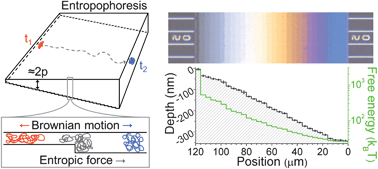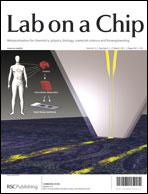A complex entropy gradient for confined DNA molecules was engineered for the first time. Following the second law of thermodynamics, this enabled the directed self-transport and self-concentration of DNA molecules. This new nanofluidic method is termed entropophoresis. As implemented in experiments, long DNA molecules were dyed with cyanine dimers, dispersed in a high ionic strength buffer, and confined by a nanofluidic channel with a depth profile approximated by a staircase function. The staircase step depths spanned the transition from strong to moderate confinement. The diffusion of DNA molecules across slitlike steps was ratcheted by entropic forces applied at step edges, so that DNA molecules descended and collected at the bottom of the staircase, as observed by fluorescence microscopy. Different DNA morphologies, lengths, and stoichiometric base pair to dye molecule ratios were tested and determined to influence the rate of transport by entropophoresis. A model of ratcheted diffusion was used to interpret a shifting balance of forces applied to linear DNA molecules of standard length in a complex free energy landscape. Related metrics for the overall and optimum performance of entropophoresis were developed. The device and method reported here transcend current limitations in nanofluidics and present new possibilities in polymer physics, biophysics, separation science, and lab-on-a-chip technology.

You have access to this article
 Please wait while we load your content...
Something went wrong. Try again?
Please wait while we load your content...
Something went wrong. Try again?


 Please wait while we load your content...
Please wait while we load your content...